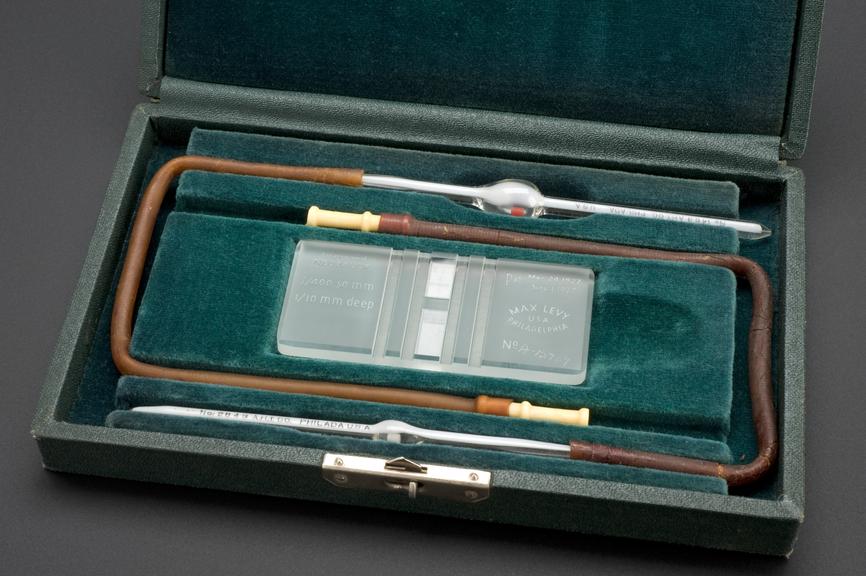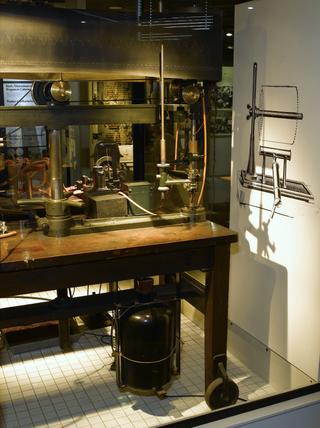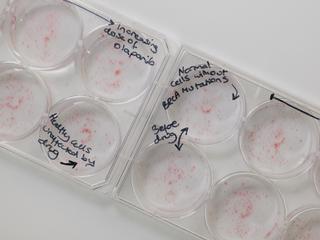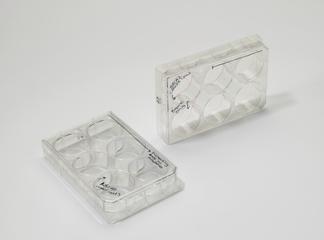
Haemacytometer, Philadelphia, United States, 1900-1980
- Made:
- 1900-1980 in Philadelphia
- maker:
- Arthur Thomas and Company

Haemacytometer, with Levy counting chamber in box marked "Medical Dept. U.S. Army" & " Arthur & Thomas Co., Philadelphia, U.S.A." - complete with Double Improved marking Neubauer, No.A 12709. Red cell pipette marked No.1463 A.H.T.Co., Philadelphia. White cell pipette marked No.2643 A.H.T.Co., Philadelphia
The number of blood cells in a sample can be accurately assessed using a haemacytometer. This American example dates from the 1900s. It consists of a haemacytometer, a Levy counting chamber (essentially a microscope slide divided into squares) and two cell pipettes. A blood sample is diluted and placed on the slide. Cells in each square are then counted by examining the sample through a microscope.
An increase or decrease in blood cells in the blood is analysed to estimate levels of malnutrition or the presence of disease within the body. A low level of red blood cells is called anaemia. A high level of red blood cells is called polycythaemia. This haemacytometer was made in Philadelphia by Arthur Thomas and Company. It appears to have been owned by the Medical Department of the United States Army.
Details
- Category:
- Laboratory Medicine
- Object Number:
- 1994-1011
- Measurements:
-
overall: 30 mm x 180 mm x 105 mm,
- type:
- haemacytometer
- credit:
- Institute of Medical Laboratory Sciences




